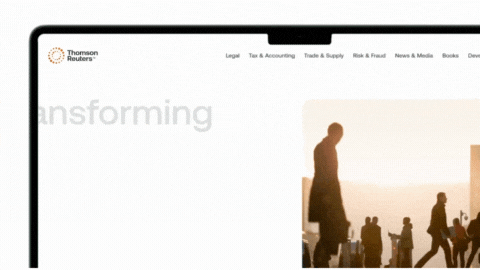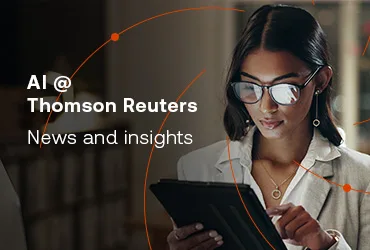It’s a balancing act for general counsel to protect the business without being seen as a blocker
In this second installment of our three part series on the future-focused legal team we explore what the in-house legal team must do to be seen as great business partners instead of a business blocker. Also see the rest of the series to explore ways to help companies navigate risk and to implement the right technology to drive your goals.
The GC and in-house legal team must manage a fine balancing act, protecting the legal integrity of the organization while not being seen as business blockers. The legal department can achieve this by using best practices to demonstrate value in ways that help the business move forward and meet its growth goals.
Automating certain processes in a way that legal teams can trust is key to success. This enables them to implement technology that truly adds to their work, which in turn enables the GC to focus on being strategic boardroom advisors and prove their worth.
Data
Everything starts with data today. Big data is at the heart of the Fourth Industrial Revolution and the race to gain access to information and analytics that can inform better and more responsive solutions for business. For the GC, this means ensuring all information is centralized in one place so teams can measure and monitor effectively.
Core
At the core of the business there should be a standard operating procedure ensuring the in-house legal department and the GC provides guidance on all decisions and arrangements that bind the company, such as contractual relationships and RFPs. Legal sign-off should be procured through a formal, timely, and efficient process at the earliest possible point. This may sometimes involve self-service contract systems or dynamic FAQs.
Empowerment
Ultimately, people empowered with the best tools are best able to deliver. New types of technology tools can create enormous efficiency, improve delivery, and reduce drudgery significantly for legal professionals. For instance, generative artificial intelligence (GenAI) legal tools can streamline document review and due diligence activities, make legal research far more efficient, and simplify the process of drafting new contracts and legal documents.
These technologies benefit not only the legal team. They also benefit departments throughout the business that are looking to create efficiency and modernize their operations. The possibilities for innovation are endless – and so are the possibilities for mistakes and consequences. How do you balance the need to protect the business without being a blocker? How do you enable growth while keeping well intentioned teams from running amok?
Rather than fighting against the stigma of being a “department of no,” work actively toward being a “department of yes.” Be the strategic advisor who helps the business figure out how to use tools like generative AI or blockchain in a responsible way.
Look at the arrival of new technologies as an opportunity to lead the business through change. You and your team can show your colleagues what’s possible. While you do that, model how to appropriately consider factors like ethics, communication, risk, and security.
Ethics
Legal departments are at the center of ethics and integrity discussions. GCs must embed an ethical compliance culture and desired behaviors into the legal department so that the team can model it for the organization.
Shaping an ethical compliance culture throughout the organization is key to your role as a strategic advisor. Look at your company’s ethics policies and training to see where new technologies create ethical gray areas. Then ask where your values and ethics policies call on you to innovate. Where do you have a duty to your clients, customers, or shareholders to optimize your operations or keep your product lines cutting edge?
Risk
A great number of risks are financial or operational in nature. The team needs to manage legal risks both separate from and connected to other business risks. Generative AI will be a source of both legal and operational risks.
On the legal side, the stories of lawyers using Chat GPT to create court documents – and turning in documents citing made-up cases are now legendary. But smarter lawyers are still exploring the use of GenAI in researching, drafting, and managing documents. They make sure to choose tools they trust and verify the output before they use the content. That’s one way to manage risk and eliminate the need to simply say no.
On the business side, perhaps your company doesn’t want AI-generated marketing content going out under its brand. But there are still ways your marketing colleagues can use GenAI to streamline their work. Rather than simply saying no, ask where the biggest drags on their time are and encourage them to find tools that solve those steps without putting the business at excessive risk.
Security
Protecting your company’s data and systems is paramount, and with the introduction of new technology partners, this is getting more complex. With generative AI, for instance, you must be sure that the data you use in your prompts isn’t then fed into the wider system, putting sensitive client or company information at risk.
Unfortunately, cybersecurity threats are constantly shifting. Cyber risk is a legal, business, and IT issue, and must be embraced holistically. The good news is that if you work proactively with IT and the business, you can bring a legal perspective early in the process and shape policies, programs, and procurement processes as they come together, rather than stopping projects that are already in motion.
Communication
Being a strategic advisor requires effective communication, and no one will see your wise counsel for what it is if they don’t understand it. In the case of bringing new capabilities (or guardrails) to the business, it always helps to frame your message relative to the organization’s goals and values and to speak plainly.
For instance, if someone asks if they can use a GenAI tool to create a work product (like a contract or marketing content), acknowledge why they would want to use the tool. Then clearly and simply lay out the ways to use generative AI with confidence. This includes making sure you trust the data the AI relies on, that your proprietary data is safe, and that you can verify the authority the output draws from.
By explaining your thinking in your communication, you don’t have to give a blanket no – you can say “yes, and here’s how you do it safely.”
Mastering the balancing act
Helping the business say a responsible “yes” to new opportunities and initiatives is the work of the strategic advisor. Helping colleagues use technology responsibly, ethically, and profitability is a great way for general counsel and other in-house lawyers to build their reputations as collaborators in the business. Of course, finding the right balance between enforcement and enablement will take time. But with a combination of curiosity, finesse, practice, and patience, you and your team can absolutely master this balancing act.
Legal solutions from Thomson Reuters help GCs and their teams step into the future, with AI-powered workflow and research tools that streamline their work and help them elevate their results.
 |












